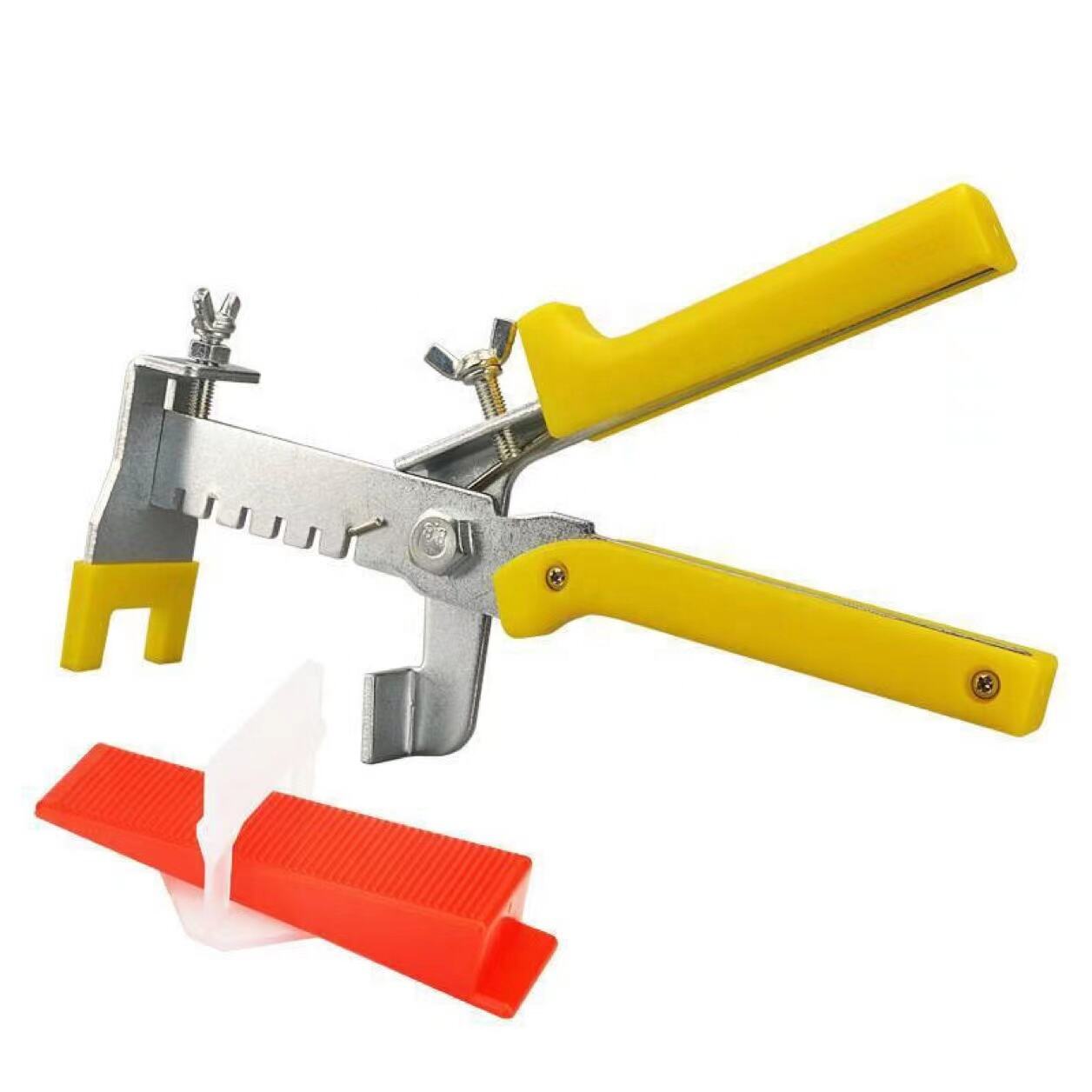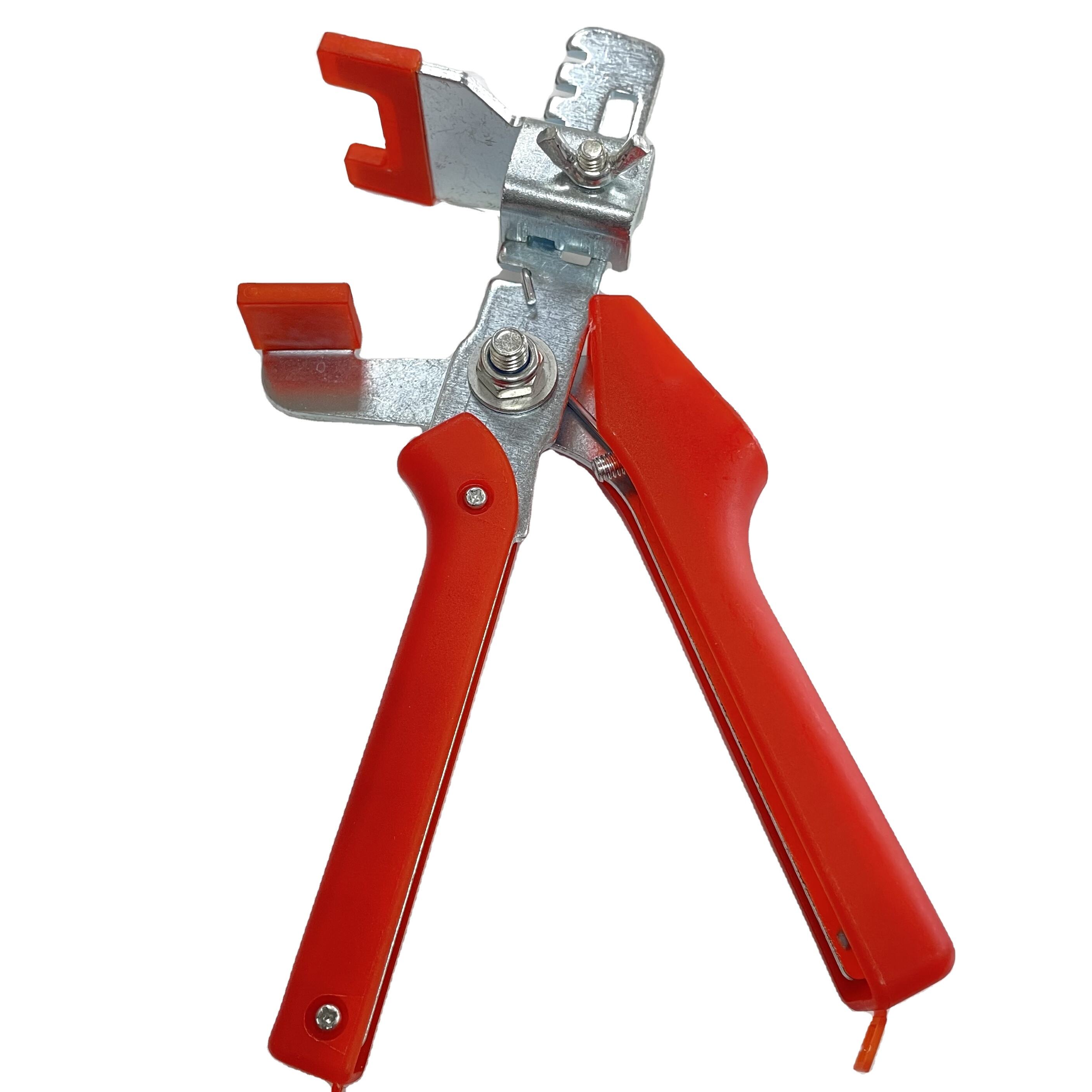Förståelse av det avgörande verktyget för perfekt plattläggning
Professionell plattläggning kräver precision, skicklighet och rätt verktyg för att uppnå felfria resultat. Bland dessa viktiga verktyg sticker plattan nivåeringspincett ut som ett banbrytande instrument som omdefinierar hur entreprenörer och hemslöjdare lägger plattor. Detta specialiserade verktyg används tillsammans med plattläggningsnivåsystem för att säkerställa perfekt jämnt liggande ytor, eliminera kantförhöjningar och skapa sömlösa övergångar mellan plattorna.
A plattan nivåeringspincett är ett mekaniskt handverktyg speciellt utformat för att applicera konstant tryck på plattläggningsklämmor eller kilar under installationsprocessen. Genom att fördela kraften jämnt över plattans yta hjälper det till att skapa en helt plan yta, vilket professionella strävar efter i varje projekt. Oavsett om man arbetar med stora formatplattor, natursten eller komplexa mönster har detta verktyg blivit oumbärligt inom modern plattläggning.
Komponenter och designfunktioner hos plattläggningskrampor
Viktiga delar och konstruktion
Kakeljämningspincetten består av flera viktiga komponenter som tillsammans ger optimal prestanda. De ergonomiska handtagen är vanligtvis försedda med bekvämt greppmaterial, vilket möjliggör långvarig användning utan att händerna tröttnar. Den svängbara huvudmekanismen är noggrant konstruerad för att tillämpa jämn tryckkraft över jämningsklämmor eller kilblock.
Pincettens käftar är särskilt utformade för att passa olika typer av jämningsystemskomponenter. De flesta modeller har justerbara spänningsinställningar, vilket gör att installatörer kan finjustera det applicerade trycket beroende på kakeltjocklek och materialtyp. Verktygets konstruktion innefattar vanligtvis slitstarka material som härdat stål för att säkerställa lång livslängd och konsekvent prestanda.
Avancerade funktioner och variationer
Moderna plattläggningstänger är utrustade med olika innovativa funktioner som förbättrar deras funktionalitet. Vissa modeller har inbyggda måttguidar för att säkerställa jämn avstånd mellan plattor. Andra har snabbkopplingsmekanismer som påskyndar installationsprocessen och minskar belastningen på händerna vid upprepade operationer.
Premiumversioner kan ha utbytbara huvuden för att passa olika märken och stilar av läggningsystem. Möjligheten att justera mekanisk fördel genom olika handtagspositioner gör att installatörer kan arbeta effektivt med olika plattstorlekar och material, från sköra mosaiker till tunga stenskivor.

Arbetsmekanism och användning
Grundläggande driftprinciper
Kakeljämningspincetten fungerar enligt en enkel men effektiv mekanisk princip. När handtagen trycks samman applicerar verktygets käftar noga kalibrerat tryck på komponenterna i jämnningssystemet. Denna åtgärd drar intilliggande kakelplattor i rätt läge samtidigt som den konstanta höjden över ytan bibehålls. Processen skapar en stark tillfällig förbindelse som håller kakelplattorna på plats medan sättningsmaterialet härdat.
Rätt teknik innebär att placera pincetten vinkelrätt mot kakelytan och applicera jämnt tryck tills jämningsklossen eller kilen är fullt inlåst. Verktygets design säkerställer att trycket fördelas jämnt, vilket förhindrar skador på kakelkanterna samtidigt som optimal justering uppnås.
Kompatibilitet med jämnningssystem
Klinkerjusteringspincett är designad för att fungera sömlöst med olika justeringssystemkomponenter. De vanligaste systemen inkluderar klämmor och kil, huvor och band, eller roterande spindelkonstruktioner. Varje system kräver specifika hanteringstekniker, och moderna pincetter kan ofta hantera flera systemtyper tack vare anpassningsbara käkar.
Att förstå kompatibiliteten mellan din klinkerjusteringspincett och det valda justeringssystemet är avgörande för en lyckad installation. De flesta tillverkare ger detaljerade riktlinjer gällande kompatibla komponenter och rekommenderade tryckinställningar för olika klinkertyper och tjocklekar.
Fördelar och Tillämpningar
Professionella fördelar
Professionella klinkerläggare drar stora nytta av att använda klinkerjusteringspincett i sina projekt. Verktyget minskar installationstiden avsevärt samtidigt som det förbättrar konsekvensen och kvaliteten på den färdiga ytan. Det minimerar risken för reklamationer och garantianmälningar relaterade till kantförskjutning, vilket i slutändan förbättrar entreprenörens rykte och resultat.
Den precision som erbjuds av plattläggningsverktyg är särskilt värdefull när man arbetar med stora formatplattor, som är mer benägna att få kantnivåproblem. Verktygets förmåga att bibehålla konstant tryck över breda ytor hjälper till att uppnå professionella resultat även vid svåra installationer.
Hobbyhantverk och Hem Förbättringstillämpningar
För hobbyhantverkare och hantverkare hemma gör plattläggningsverktyg det möjligt att lägga plattor med professionell kvalitet. Verktygets intuitiva användning och konsekventa resultat hjälper till att övervinna vanliga utmaningar som annars kräver års erfarenhet att bemästra. Denna tillgänglighet har lett till ökad självförtroende bland hobbyhantverkare som tar sig an komplexa plattläggningsprojekt.
Hemförbättringsprojekt drar nytta av den precision och pålitlighet som erbjuds av plattläggningsverktyg. Oavsett om du renoverar ett badrum, lägger en köksvägg eller förbättrar uteplatser hjälper verktyget till att uppnå resultat som kan mäta sig med professionella installationer.
Underhåll och bästa praxis
Vård och rengöring
Riktig underhåll av plattläggningskäppar säkerställer långsiktig pålitlighet och konsekvent prestanda. Regelbunden rengöring efter användning förhindrar att sättningsmaterial samlas upp, vilket kan påverka verktygets funktion. En lätt applicering av smörjmedel på rörliga delar hjälper till att bibehålla jämn funktion och förhindrar rostbildning.
Lagring innefattar att förvara verktyget i en torr miljö och använda den medföljande säkerhetslåset när det inte används. Periodiska kontroller av slitagepunkter och rörliga delar hjälper till att identifiera potentiella problem innan de påverkar prestandan. Professionella användare har ofta flera käppar för att säkerställa oavbruten arbetsflöde vid stora projekt.
Användningsriktlinjer och tips
För att lyckas med användningen av plattläggningsverktyg är det viktigt att följa etablerade bästa metoder. Att börja med rena ytor och korrekt blandade limmaterial skapar grunden för optimala resultat. Konsekvent tryck och korrekt placering av komponenterna i läggningsverktyget säkerställer en jämn kraftfördelning.
Professionella installatörer rekommenderar att öva med verktyget på provuppställningar innan man påbörjar större projekt. Att förstå sambandet mellan tryckinställningar, plattjocklek och materialens egenskaper bidrar till att uppnå optimala resultat på ett konsekvent sätt. Regelbundna kalibreringskontroller bevarar verktygets precision över tid.
Vanliga frågor
Hur länge ska plattläggningsverktyg vara på plats under installationen?
Komponenterna i nivåsystemet bör vanligtvis lämnas på plats i 24–48 timmar, beroende på vilket material som används och miljöförhållandena. Tången själv tas dock bort omedelbart efter att varje nivåklämma eller kloss har säkrats, vilket gör att den kan användas kontinuerligt under installationen.
Kan plattläggningstångar användas med alla platttyper och storlekar?
De flesta plattläggningstångar är utformade för att fungera med plattor från 1/8 tum till 1/2 tum i tjocklek. De är lämpliga för keramik, porslin, natursten och stora formatplattor. Det är dock viktigt att verifiera kompatibiliteten med ditt specifika nivåsystem och plattspecifikationer.
Vilken underhåll krävs för plattläggningstångar?
Regelbundet underhåll inkluderar rengöring efter varje användning, smörjning av rörliga delar med jämna mellanrum samt förvaring av verktyget i ett torrt utrymme. Kontrollera käftar och justeringsmekanismer regelbundet på tecken på slitage eller skador, och byt ut slitna komponenter för att bibehålla optimal prestanda.


